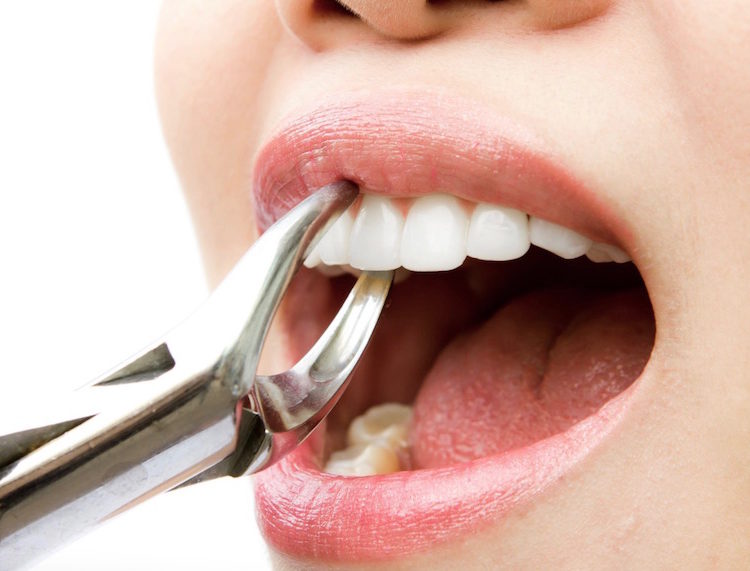After area is deeply anesthetized, the tooth is gently pulled out of its socket without using excessive forces. Antibiotic therapy is administered for 5-10 days following the procedure.
Extraction occurs when the tooth is severely infected, decayed or, most commonly in the case of wisdom teeth, impacted.
Impacted-wisdom tooth extraction:
Because it is the last tooth to erupt in the mouth, there is usually no room for the wisdom tooth, causing it to become buried beneath the gum and unable to erupt. It may trap food, causing decay, gum inflammation, bad breath and pain. The face may swell in extreme cases, and the impacted tooth may cause a dental cyst. The pressure the tooth exerts on other teeth may cause them to move or rotate.
– Steps of extracting impacted wisdom teeth:
• Area is deeply anesthetized.
• Incisions are made, and gum tissues are gently pulled away from bone.
• In the case of bone preventing tooth removal, the bone is removed.
• Wisdom teeth are pulled out (may be sectioned into pieces if necessary).
• Gum tissues are sutured (stitched) back into place.
• Antibiotic therapy is started and continues for 5-10 days.
• Stitches are removed one week after the procedure.
– Procedure Complications:
• Pain and swelling in surgical area.
• Bleeding may persist for up to 24 hours after the surgery.
• Numbness of the tongue/lip (temporary or, in rare, cases permanent).
• Dry socket may occur.
Dry Socket:
In most patients, blood fills up the sight of extracted tooth. The blood then hardens and forms a blood clot, over which gum grows eventually.
If a blood clot fails to form in the sight of extraction, or forms but is removed due to forced spitting or excessive gargling, the bone is left exposed in the oral cavity and causes severe pain. This complication is referred to as “Dry Socket”, and is treated through inserting special packs into the socket, thus protecting the bone and decreasing the pain.


